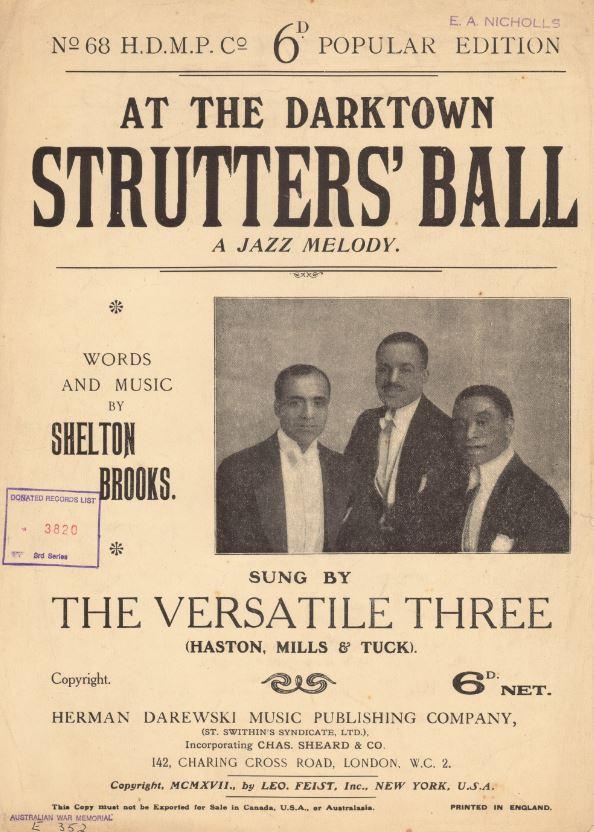Darktown Strutter’s Ball: Jazz and the Australian Imperial Force

Darktown Strutter’s Ball was a popular song from the First World War that was first published in 1917. The song was written by Shelton Brooks, an African-Canadian, who also wrote Some of these days. Both songs were popularised by the Ukrainian-born American singer, Sophie Tucker, in her vaudeville show. It was quickly picked up by other performers of the period, and became one of the very first recordings of jazz music. Today, these examples of early jazz music are referred to as “Dixieland” or “New Orleans Jazz”.
The song made it to second place on the music charts in 1917 and more than three million pieces of the sheet music have been sold. Covers of the song have been recorded by names such as Al Jonson, Ella Fitzgerald, Chet Atkins, Dean Martin, Bing Crosby and Fats Domino. The Beatles also performed this song at some of their early concerts.
The first reports of this song in Australian newspapers begin in September 1918. The Memorial holds a copy of this song in its music collection that belonged to Ernest Alfred Nicholls, the founder of the No 1 Command Depot Concert Party, The Perham Stars. The group later became known as The Aussies and went on to perform a number of concerts at Perham Downs as well as toured camps and hospitals throughout England. Nicholls was a baritone singer who continued to move in musical circles following his return from the war. A large collection of sheet music that belonged to Nicholls, many bearing the AIF stamp, were donated to the Memorial in the 1970s. Darktown Strutters Ball was one of these titles but it is not known whether it was ever performed by one of the official concert parties.
The Memorial also holds a concert program for a concert held aboard HMAT Soudan. 4985 Private Archibald John Hall performed Darktown Strutters Band, with the description of “rag”, during this concert on 23 May 1919. Hall, a clerk from Melbourne, enlisted in the AIF on 13 July 1915. He served with the 5th Battalion and left England to return to Australia on 12 May 1919.